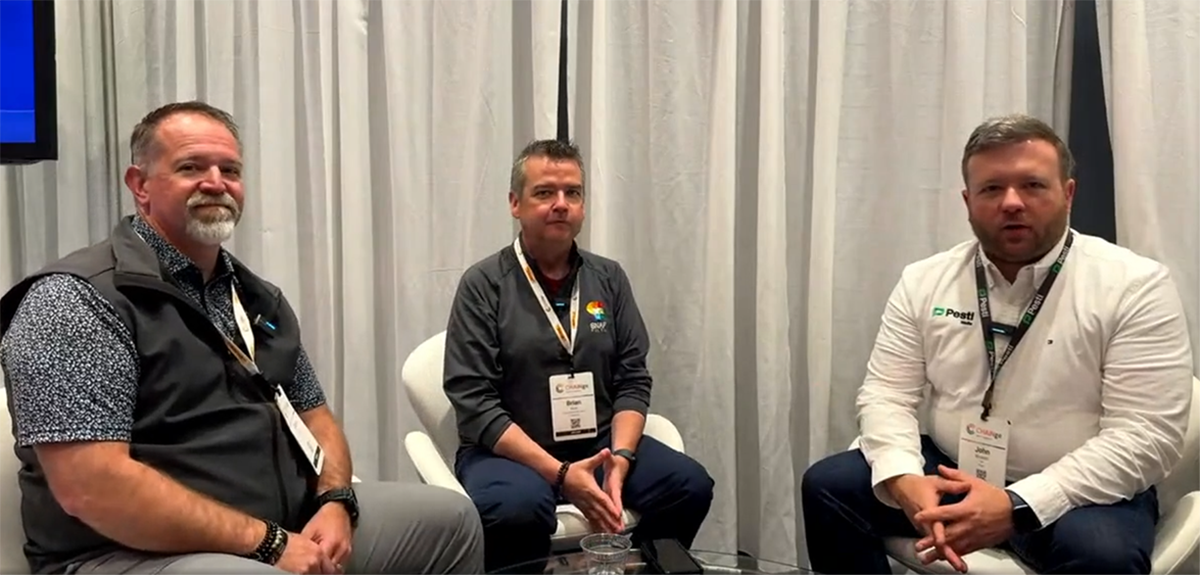Driving 3PL Growth Through Collaboration and Flexibility: Insights from CHAINge North America
At CHAINge North America 2025, SnapFulfil had the opportunity to join industry leaders for a live discussion on warehouse management system (WMS) transitions, automation, and what it takes for third-party logistics providers (3PLs) to stay competitive in a rapidly evolving supply chain landscape.
The conversation, moderated by John Monarch (CIO, PESTI), featured Brian Kirst (COO, SnapFulfil) and Shane Allgeier (COO, HJI Supply Chain Solutions). Together, they explored how HJI successfully migrated from a legacy WMS to SnapFulfil—and the business benefits that followed.

From Legacy Constraints to Agile Operations
For HJI Supply Chain Solutions, the move away from a legacy system wasn’t just about technology. It was about finding a partner that could keep pace with customer demands. As Shane explained, their old system limited adaptability and made responding to new client requests both slow and costly.
With SnapFulfil, HJI gained a flexible, configurable platform that empowers their team to adjust processes quickly, track key data, and expand services without being held back by rigid systems. The result? Faster onboarding, greater customer satisfaction, and the ability to say “yes” to new business with confidence.
Rapid Implementation, Real Results
While most WMS transitions can drag on for months—or even years—HJI went live with SnapFulfil in just weeks. That speed was possible thanks to SnapFulfil’s cloud-based platform and a collaborative approach to implementation.
Importantly, SnapFulfil didn’t just provide a solution. The team also trained HJI to configure and manage the system themselves. This self-sufficiency means HJI can continuously adapt without relying on long vendor-led projects.
Unlocking the Power of Automation
Looking ahead, HJI is already deploying semi-autonomous forklifts through SnapControl and exploring goods-to-person automation to further streamline fulfillment. These steps aren’t about replacing workers—they’re about empowering them.
“Automation is really addressing labor scarcity,” Brian explained. “It allows operations like HJI’s to maximize efficiency and scale without the constant challenge of adding more headcount.”
The Numbers Behind the Success
HJI has already seen measurable improvements, including a 29% boost in receiving efficiency. With new automation initiatives, they expect capabilities to increase by up to 40%—helping them handle higher volumes while maintaining service excellence.
A Model for Modern 3PLs
Perhaps the most important lesson from HJI’s journey is that collaboration and flexibility are key. By embracing SnapFulfil’s best practices while tailoring the system to their unique needs, HJI has built a foundation for sustainable growth.
As Shane noted, the partnership is about more than software:
“Most companies want to give you the fish. SnapFulfil is teaching us how to fish—so we can move faster and meet aggressive growth goals.”
Looking Ahead
Both HJI and SnapFulfil see CHAINge North America as a valuable forum for sharing knowledge and pushing the supply chain industry forward. With HJI expanding into new regions and SnapFulfil rolling out an enhanced UI and reporting dashboards, the future looks bright.
If you missed the session, you can watch the full livestream here and learn how a flexible WMS can power scalability, automation, and lasting customer success.


